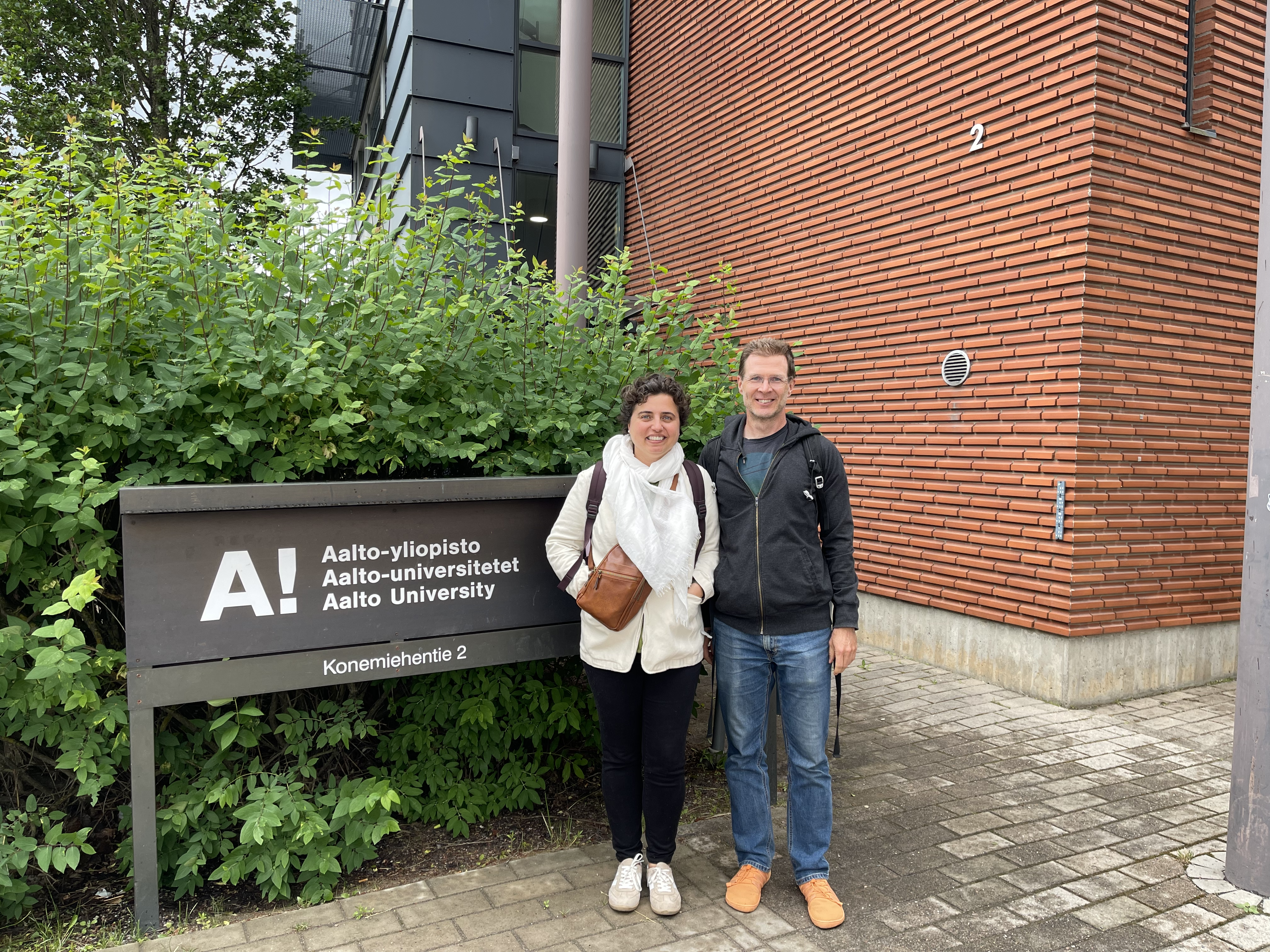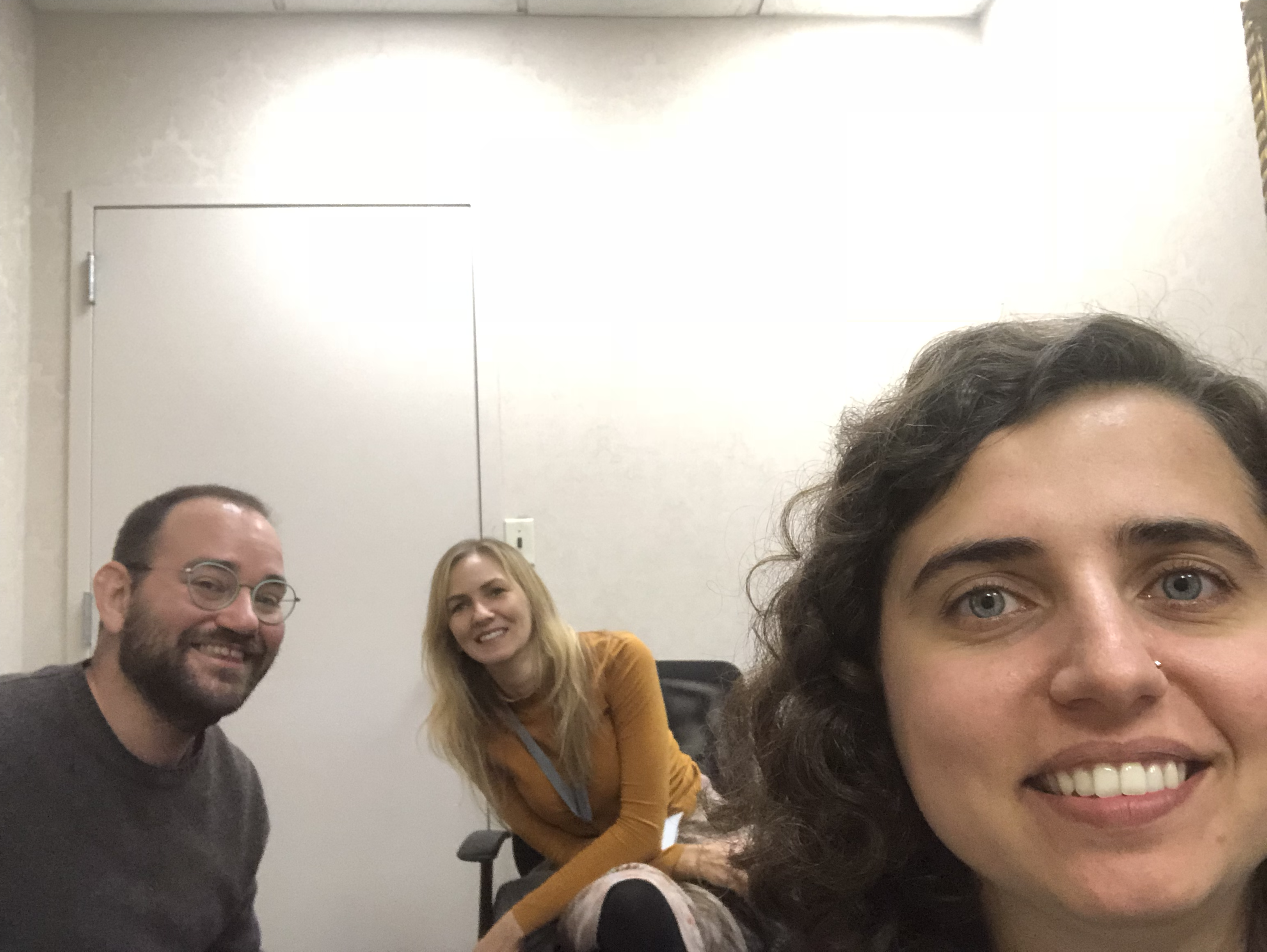
This week, I had the privilege of visiting Aalto University in Helsinki, Finland to give a talk. In addition to tasting the delicious Finnish water and seeing the beautiful Aalto campus, I was very happy to meet Aki Vehtari and his research group members. In this blog post I want to summarize the points I made during my talk. I first share my own Bayesian journey and then my updated beliefs.
My Own Bayesian Journey
In a few weeks, I will become an “Associate Professor of Teaching”. For this talk, I wanted to share my own Bayesian journey and focus on some of the projects I worked on for two reasons. 1) It gave me an opportunity to reflect on my early career work. 2) I knew that the most of the attendees would be graduate students so I thought, possibly I could inspire them with some early career projects.
Graduate School
My first exposure to Bayesian methods was during my Ph.D. I took a Bayesian course for the first time. Prior to this I had already taken several statistics courses. In other words, Bayesian way was not my entry way to statistics. This is also true for many others. Facecook reminds me that I took the course in Fall 2015.

I remember the course being extremely challenging and I can’t say that I truly enjoyed it. This speaks more to my professor’s teaching style. However, I did find the Bayesian way of thinking to be interesting.
First Teaching Experience
Right after finishing my Ph.D. I had an opportunity to work at New College of Florida. I was asked to teach an elective course for the Master’s in Applied Data Science program. I chose to teach “Applied Bayesian Data Analysis”.

Instagram reminds me that I was really excited about this opportunity. This experience has shown me how difficult it is to teach Bayesian methods. Back then, I could not even locate resources that were appropriate at my students’ level who studied in various disciplines in their undergraduate years and they had varying degrees of mathematical and statistical preparation.
Bayes Rules! book and STATS 115

In October 2018, I met Alicia Johnson and Miles Ott at the Women in Statistics and Data Science Conference. At the time, they had just started writing a book on Bayesian methods. I asked them, “Can I PLEASE join your Bayesian book project?” without knowing much about them or them knowing much about me. This bold move brought us the open-access Bayes Rules! book. Throughout the writing process, I joined University of California Irvine and taught the STATS 115 course several times.
These experiences have taught me
Teaching Bayesian methods in an accessible way can be possible unlike what I experienced in graduate school.
Teaching Bayesian methods can help students understand frequentist inference better. For instance the biggest aha moment for my students is understanding the p-value after having learned the Bayes Factor.
Having priors is a big challenge for novice learners. For anyone who is not familiar, in addition to using evidence from the data, Bayesian methods rely on using prior information. When students realize that there is no one correct answer to building a prior and that their prior model might differ from their peers’, they don’t feel very comfortable. In my opinion, this is mainly because throughout their educational history, whether it is math, stats, or science classes, they are told to find the correct answer, and there is only one correct answer. We know that many scientists often have disagreements on what the correct answer is to many problems if a correct answer even exists. Scientific practice surrounding uncertainty and scientific training of it differs tremendously and thus the students’ challenge with building prior models.
Study on Curricula
After having taught STATS 115 for a few iterations and having finished writing a book on the topic, I really wanted to understand others’ approaches to teaching Bayesian methods at the undergraduate level and the status of Bayesian courses at the national level.
I collaborated with Dr. Jingchen Monika Hu and published the The Current State of Undergraduate Bayesian Education and Recommendations for the Future. We have examined the course offerings of 152 high-ranked US institutions
Through this project I learned that
Many higher education institutions do not offer an undergraduate Bayesian course
The Bayesian courses are often offered as an elective for statistics, data science, math, and computing type of majors
Bayesian courses are listed as an elective course for very few majors outside of these disciplines such as Public Policy, Psychology, and Economy For simplicity in this blog post, I will refer to these as other STEM fields.
Bayesian courses have a lot of prerequisites The range was 0-10 courses and the mode was 6 courses. In simpler words, students have to take “about 6 courses” before they can enroll in a Bayesian course. Having a lot of prerequisites makes Bayesian courses less accessible to students in other STEM fields as their discipline specific training also requires many other courses.
Bayes BATS
Natural next step was to design a program with the aim of making Bayesian methods accessible to other STEM fields. In collaboration with Drs. Amy Herring and Jingchen Monika Hu we got funding from National Science Foundation’s Improving Undergraduate STEM Education program (award numbers 2215879, 2215920, and 2215709) for the Bayes BATS program.
Through this program we train instructors of undergraduate students who teach in other STEM fields on Bayesian methods and Bayesian pedagogy. Instructors develop course materials for their students and share them with their discipline-specific scientific communities.
Through this project I learned that
There is a broader need in training of Bayesian methods across different disciplines than I initially anticipated
There needs to be more learning opportunities targeted specifically for instructors
Building positive communities is essential especially in Bayesian methods which historically has been reserved for those “who go beyond the 6 courses prerequisite”
K-12 study
In the path of trying to make Bayesian methods more and more accessible to instructors and learners, I also got to collaborate with Drs. Sibel Kazak and Joshua Rosenberg. We designed and implemented a Bayesian Data Analysis lesson for pre-service mathematics and science teachers.
This project has taught me
Bayesian ideas can be perfectly placed in K-12 science curricula. This work has even reminded me of my high school physics and chemistry classes where we had to conduct experiments. Every lab assignment started by asking us what we think will happen in the experiment, in other words, teachers wanted us to express our prior idea. However, at the end we just compared the prior idea with the observation rather than incorporating the prior idea.
Training the trainer is also very crucial at the K-12 level.
We need to embrace more of “there are different levels of learning.” If we expect everyone to make derivations, Bayesian methods will only be reserved for those who most likely learn it in graduate school and onwards.
Updated Beliefs
In the nine years since my first Bayesian course until today, all the aforementioned projects have truly shaped my views on teaching statistical inference. Here I would like to share how my views have changed.
My prior ideas on teaching inference were all built on my own statistical training. Like many, I am inclined to think we need to teach how we were taught. Envisioning a teaching context that I have not yet witnessed is always difficult. In other words, innovative teaching is hard.
Here I share my prior ideas and my posterior ideas on teaching inference.
Prior: Students need to learn frequentist inference.
Posterior: Students need to learn frequentist and Bayesian inference.
By only teaching one point of view we are depriving them of an important paradigm.
Prior: Students first need to learn frequentist inference before learning Bayesian inference.
Posterior: Students can learn Bayesian inference before learning frequentist inference.
Just because many of us have learned frequentist inference first does not make it the best option of entry to statistical inference.
Prior: Bayesian methods can only be taught in statistics courses.
Posterior: Bayesian methods should be taught across STEM disciplines (and possibly non-STEM as well where data science is relevant).
Prior: Bayesian training requires many prerequisite courses that it can only be taught at the graduate level.
Posterior: Bayesian ideas can be started even in K-12 settings.
Prior: We can improve inferential thinking in the scientific community by training students.
Posterior: We cannot improve inferential thinking in the scientific community without training students, their instructors, and practitioners.
Prior: There is one best software that can be used for teaching Bayesian inference.
Posterior: There is a need for all sorts of computational tools when it comes to teaching Bayesian inference.
We may have a tendency to use the software we learned as a student or use for scientific practice but there is room for all sorts of tools. For instance, Stan, rstanarm/brms, and point-and-click software are all very different in their capabilities but can target different learning goals for different levels of learners.
Summary
We need to teach more Bayesian thinking in K-12, undergraduate, and graduate levels. We also need to teach it well.
We need to train students, instructors, and practitioners.